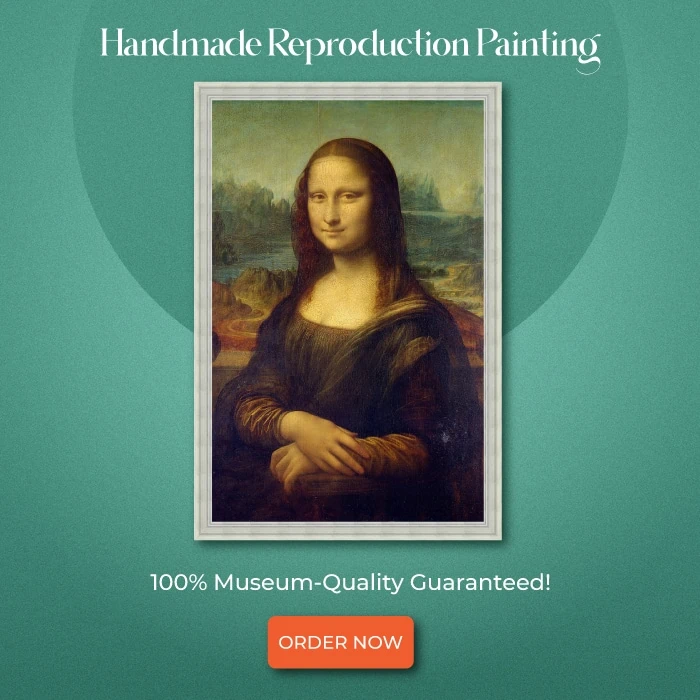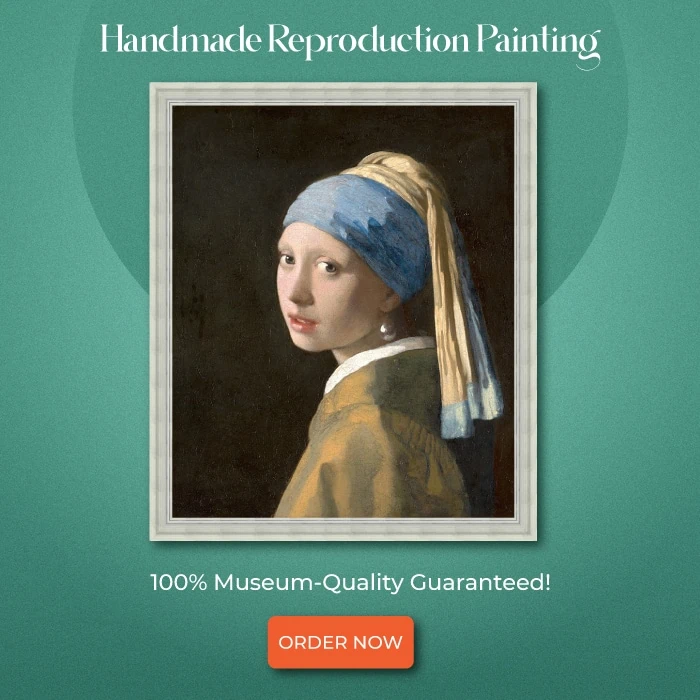You might be familiar with the names of the famous Renaissance painters Leonardo da Vinci, Michelangelo, and Caravaggio.
But there were many whose works altered viewers’ perceptions and led to socioeconomic changes at the time.
Not only that, but these Renaissance painters were also responsible for reviving ancient Greek and Roman ideas.
Today, we’re going to list down those Renaissance artists who helped progress this phenomenon, producing various meaningful pieces of work.
These Renaissance masters, born between the 14th and 17th centuries, had a lasting impact on the world of art. Let’s learn more about them!
Table of contents
1. Leonardo Da Vinci
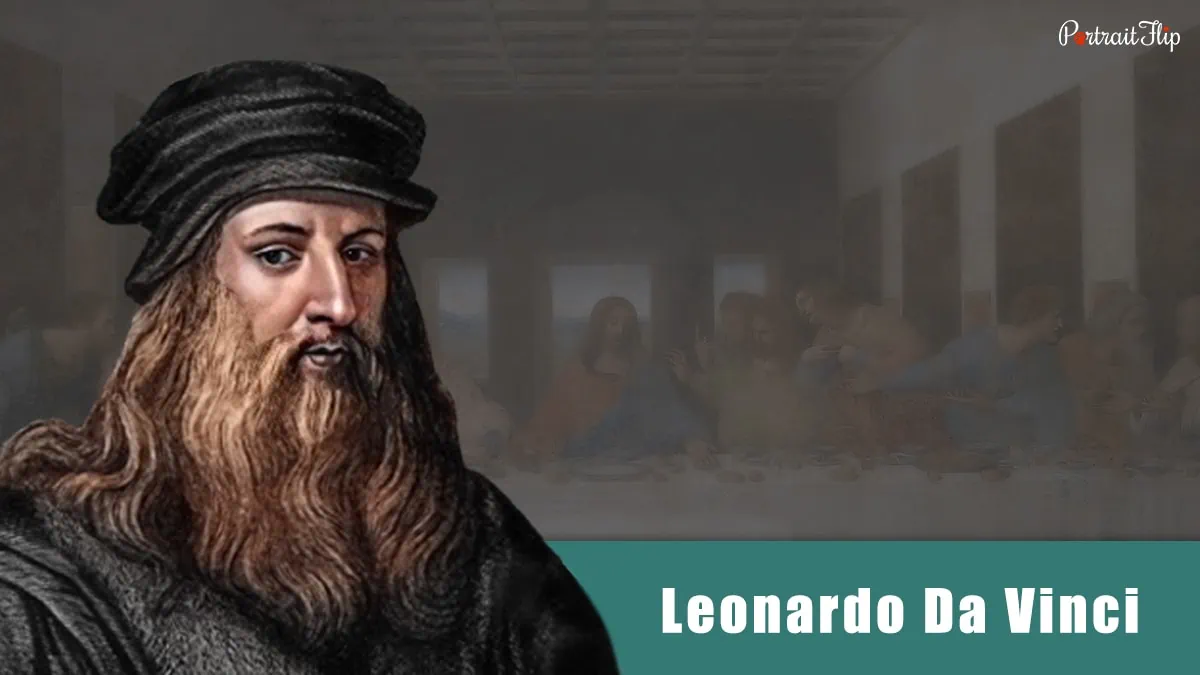
Leonardo da Vinci is unarguably the most celebrated and famous painter of all time and is often regarded as the “Renaissance Man”.
Da Vinci, the man, the inspiration to millions of people, the epitome of versatility and sheer dedication, produced countless masterpieces.
Not only was he the biggest contributor to the Renaissance art movement, but also to the world of art.
Popularly known as the creator of the iconic painting “Mona Lisa,” Leonardo da Vinci painted several paintings that have intricate compositions and mind boggling patterns.
Vinci, one of the most famous Renaissance artist’ names, was predominantly driven by nature and math, which is why his paintings would explain some sort of mathematical concept.
Fact: Leonardo da Vinci was titled the “Renaissance Man” because of his intellectual skills, knowledge, and curiosity.
The famous Renaissance figure, Leonardo da Vinci, made remarkable discoveries that changed the trajectory of the art period.
At one point, the great Renaissance artist even outperformed his idols and mentors, who later shifted to a different profession away from painting.
A fine example of it is Andrea del Verrocchio, who was also his mentor and who had asked Vinci to paint an angel.
The painting by the Renaissance artist was made so exceptionally well that André decided to stop mentoring him and shift to sculpting.
The Renaissance artist produced over a dozen prominent paintings, like Salvator Mundi, The Last Supper, Lady with an Ermine, and others. However, it was said that he had made many more that were either destroyed or unidentified.
Notable Work: The Mona Lisa Painting, The Last Supper, Salvator Mundi, and Lady With an Ermine
The Italian Renaissance artist’s paintings hold several records, which inspired many aspiring painters, and some of his paintings are located in the Louvre, the world’s most viewed art museum.
The Louvre museum houses over 5,500 artworks, including some of Da Vinci’s Renaissance artwork, the Mona Lisa painting. However, you can’t view some of the original Renaissance paintings by Da Vinci or other Renaissance artists because of security reasons.
You can own their replicas and mount them on your favorite wall.
Explore the Da Vinci Reproduction Gallery, or if you want to own a replica of his most famous art, check out “Mona Lisa Reproduction” as well.
2. Michelangelo
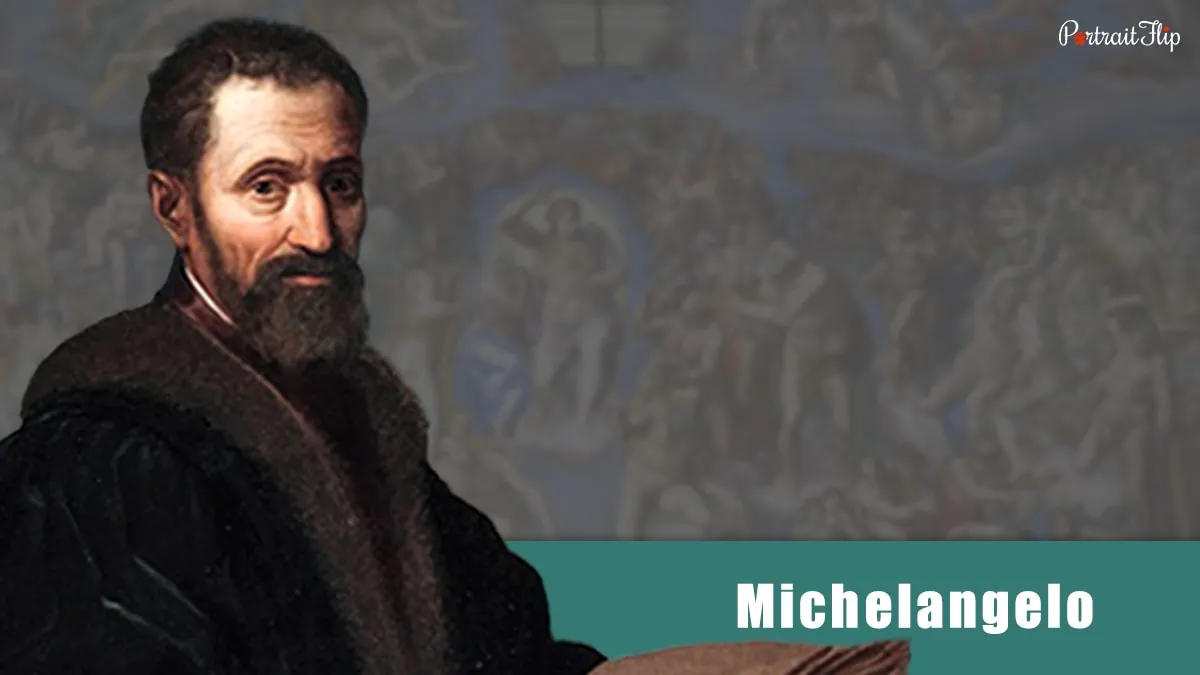
Michelangelo was one of the most supremely talented and best Renaissance artists, known for his “Sistine Chapel” ceiling.
Michelangelo was a star, who focused on nothing but art, and one can easily gauge his passion from his skills.
At 13, Michelangelo worked as an apprentice to Domenico Ghirlandaio. Later, he went to the school founded by the famous Renaissance family, the Medici Family, where he studied humanist philosophy.
As time went on, the painter of the Renaissance got fascinated with Petrarch’s works, which consisted of ancient values to promote a world view backed by logic and reason.
Highly influenced by the father of the Renaissance, Petrarch, Michelangelo took up various jobs, from sculpting to painting.
Michelangelo’s first ever work of Renaissance art was sculpture, which left a lasting impact on the art world.
Michelangelo’s famous sculpture “Pieta” was a commissioned work that was made in the span of three years.
The Florentine Renaissance artist also worked on the statue, “David,” the work of which was initiated four decades ago and became Michelangelo’s most famous work.
The most famous Renaissance artist was proficient in painting, sculpting, and engineering.
Apart from sculpture, he produced various Renaissance paintings in his lifetime.
However, in his early career, the Italian Renaissance artist would take great offense if anybody called him a painter rather than a sculptor.
The Renaissance artist was someone who didn’t let any other field meddle with his career trajectory. Fortunately, he learned how to balance things out and produced various kinds of art simultaneously.
Michelangelo, the prolific artist from the Renaissance period, was skilled, knowledgeable, experienced, and talented and witnessed success in the very early days of his life.
He was one of the few artists in the world and the world’s first Renaissance painter whose biography was made during his lifetime.
Notable Work: The Creation of Adam and The Torment of Saint Anthony
(Also Read: 12 Remarkable Paintings By Michelangelo)
3. Caravaggio

Caravaggio was the next Michelangelo of the Renaissance and also the key artist of the Baroque art movement.
Typically known for unusual depictions of subjects that would leave viewers speechless.
Piousness, fear, and tension, was quite common in this Renaissance painter’s work.
Neither had a similar style, nor did they ever meet. However, they had one thing in common and that was the name.
Caravaggio, one of the best Renaissance artists, used various emotions to show the other side of life, taking inspiration from his own life., which was quite the opposite in the case of Michelangelo.
Fact: Caravaggio was once even close to getting behind bars for a murder case.
The Renaissance artist began his career by producing still life paintings and later shifted to different genres of art.
Caravaggio became a European Renaissance artist when he began experimenting with light and colors. He used chiaroscuro techniques to maintain the balance between light and darkness to produce Renaissance images.
His selection of subjects, use of colors, and incorporation of patterns make him stand out from other Renaissance artists.
Notable Work: The Calling of St Matthew, Judith Slaying Holofernes, and David with the Head of Goliath.
4. Peter Bruegel The Elder
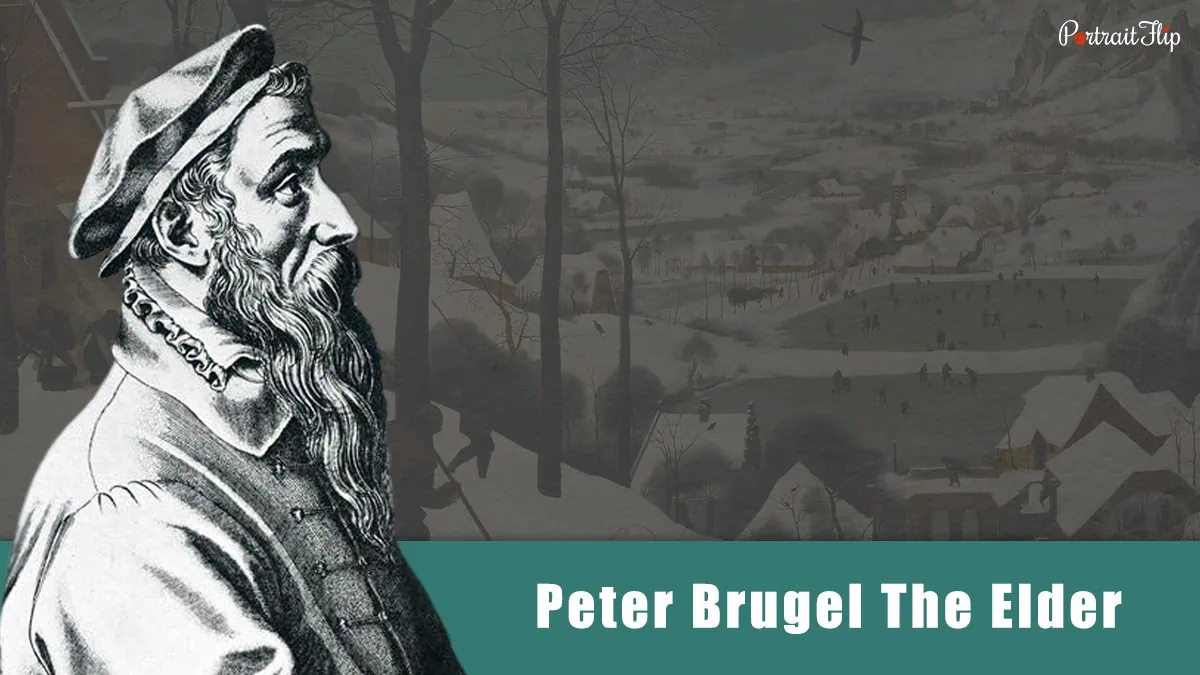
Peter Bruegel The Elder was the pioneer of genre painting and the most famous Northern Renaissance artist.
His magnificent works on the Renaissance are in the public domain. However, when it comes to his family background, birthdate, or birthplace, you won’t find any reliable information or solid evidence.
The Renaissance art period was full of encouragement and positivity which embraced Peter Brugel The Elder, the Italian Renaissance artist, who later produced iconic art pieces like The Peasant Wedding and The Hunters in the Snow.
The Renaissance painter from the 16th century was well known for portraying characters in real time.
Even though most of his landscape paintings were created in real time, some of them belonged to genre painting.
The master of the Renaissance knew how to bring real-life based events onto canvas that conveyed a deeper meaning.
Peter Bruegel’s artwork would ignite the curiosity of the viewers who studied it.
The Renaissance painter’ life was full of mystery and ups and downs, which resulted in him being a master at painting—the profession he was really passionate about, which brought fame and money his way.
Peter Bruegel (the Elder) was one of the Renaissance figures who would travel from place to place to capture the beauty of nature, and one fine example of this is his landscape Renaissance art, “Parable of the Sower” (1557).
During that period, the famous artist from the Renaissance, Pieter, drew a handful of landscape paintings before returning home; some of them set an example for aspiring painters.
Later, as the years went on, Pieter developed his own unique style, abandoning all the rules that prevented him from expressing his passion.
Pieter’s unexpected move changed his life, which also resulted in the creation of a series of twelve paintings that served as printing models and were inspired by famous Italian artists’ works.
The Dutch Renaissance artist’s works were so detailed and artistic that it became difficult for art lovers to believe in his ability.
Notable Work: The Hunters in the Snow, The Wedding Dance, and Landscape with the Fall of Icarus
5. Jan Van Eyck

Jan Van Eyck was one of the earlier figures in Renaissance art and the creator of countless meaningful art pieces.
According to Italian Renaissance master Vasari and art historian Ernst Gombrich, Jan Van Eyck was the inventor of oil painting. However, some people found the claim absurd.
Back then, political, devotional, and cultural elements were common in the art of Renaissance painter Jan Van Eyck, which can mainly be seen in his portraits and altarpieces.
The Renaissance artist’s work includes single panels, diptychs, triptychs, and polyptych panels. They were phenomenal and detailed, and they were also well-received by people who showed up to exhibitions.
The Dutch Renaissance painter would usually take up commissioned works from Phillip, who would pay him handsomely.
As an artist, his knowledge of the international Gothic style was commendable, which can evidently be seen in his Renaissance art pieces.
However, he abandoned the style and sought new painting styles that greatly emphasized realism and naturalism.
As time went on, the Renaissance artist’s techniques and styles became popular and were even adopted by the early Dutch painters.
The Dutch Renaissance artist created “Virgin and Child with Canon van der Paele,” “Ghent Altarpiece,” and “Annunciation”.
But, out of all, the most important work of the Renaissance artist was The Arnolfini Portrait, which broke several records and inspired a bunch of aspiring Renaissance artists.
As time passed, his skills in Renaissance oil painting improved dramatically, and he even became a senior member of the Tournai painters’ guild.
Notable Work: Annunciation, Madonna of Chancellor Rolin, and Arnolfini Portrait
The Arnolfini Portrait is one such work of art that is created once in a lifetime. It signifies affection, intimacy, and unity.
The stunning piece of Renaissance art is currently housed in the National Gallery, London. But you can have a replica of the Arnolfini portrait made by experts.
This is how it’ll look:

6. Sandro Botticelli
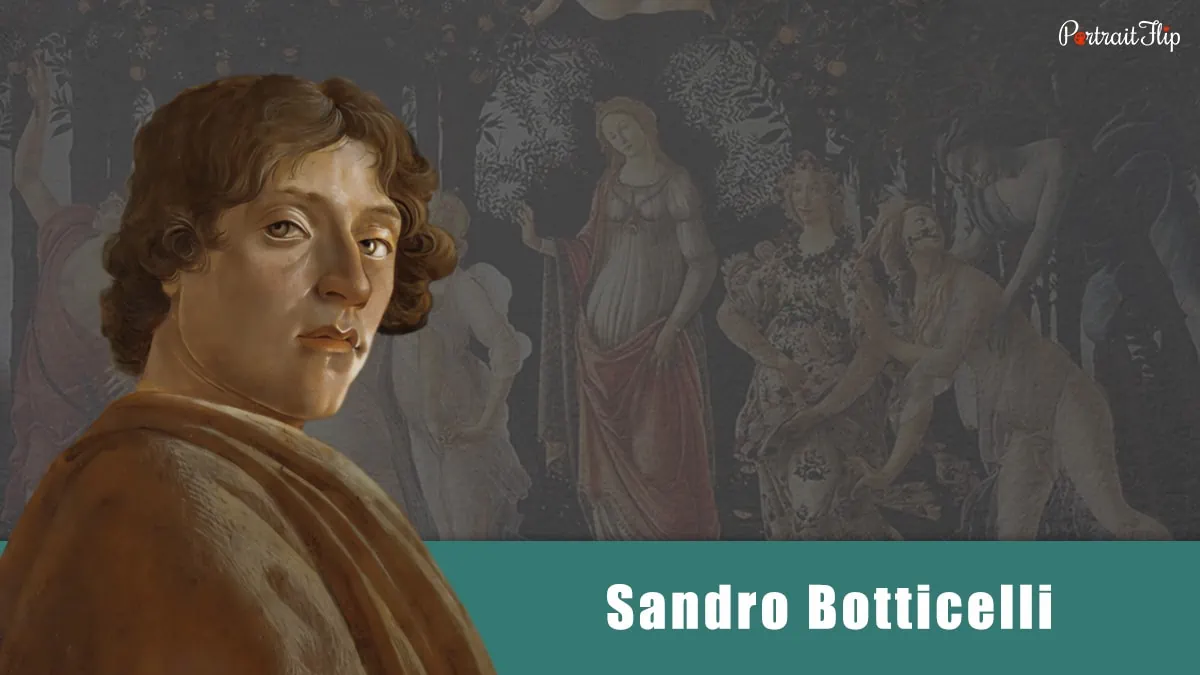
The celebrated Italian painter Sandro Botticelli inspired the world of art through his magnificent paintings like The Birth of Venus and Primavera.
Producing nearly 137 artworks, the legendary Italian Renaissance artist was once sidelined by his fellow artist friends.
His career was even jeopardized by his haters, who neglected the fact that he helped form the golden age of the Early Renaissance.
Things changed on the Renaissance painter’s end when he joined pre-raphaelites, a group of artists in the Victorian area who redeemed his early Renaissance works.
Boticelli was a talented painter of the Italian Renaissance who spent years recapturing the aesthetic ideals of the ancient world.
His compositions weren’t intricate, but they were transcendent, as he’d use luminous colors and refined brush strokes.
Boticell’s artworks (or Renaissance paintings) would have a story that contained deeper meanings and lessons.
The Renaissance artist also made a portrait of himself. But his biblical and mythological paintings were able to create more impact and are filled with symbols, fictional characters, and human figures.
Botticelli was once even under the apprenticeship of Renaissance artist Fra Fillipo Lippi, where he learned compositions of melancholic subjects.
Besides, he played a key role in the development of the Renaissance movement; his artworks inspired his generation of painters, and even today, viewers and art lovers study his Renaissance art to decode its meaning and effect.
Notable Work: Primavera, Mars and Venus, and The birth of Venus
7. Hieronymus Bosch
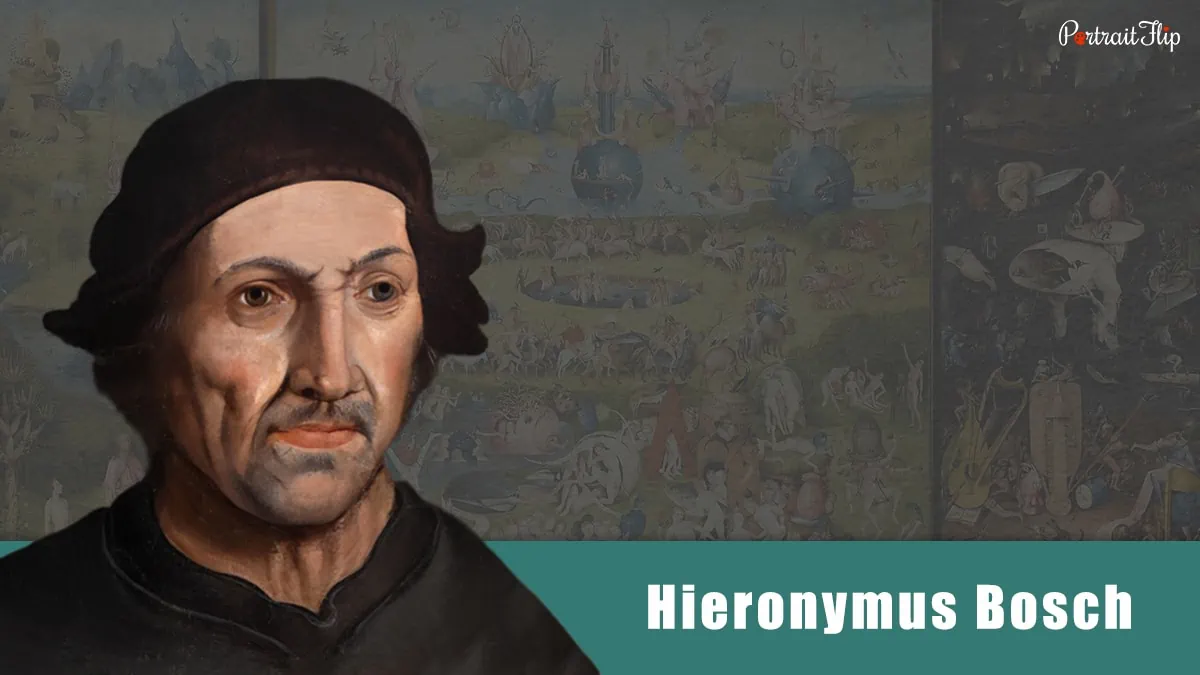
Hieronymus Bosch was a talented Renaissance painter and was known for producing triptychs that conveyed dark and deeper messages related to life.
Some works of Renaissance painters were stored in the art museum in order to preserve their beauty for good.
The important Renaissance artist and its work would leave every spectator in awe, the reason being their excellent depiction of characters made with thick brush strokes and mixed colors.
The famous Renaissance artist would paint religious and cultural scenes by using imaginary elements, giving them an artistic touch that no artist in the Renaissance had ever had before.
The popular Renaissance artist would incorporate abstract concepts into his work, but most of his Renaissance paintings’ themes would be about massive suffering, injustice, death, and disparity.
The paintings by Hieronymus Bosch weren’t negative, but they displayed spine chilling stories and realities of that time.
You can evidently see this in Bosch’s Renaissance art pieces such as Death and the Miser, The Haywain, and Christ Carrying the Cross—an intense painting of Jesus.
The Renaissance figure’s work, such as The Garden of Earthly Delights, also has unusual themes, as Renaissance art depicts a landscape filled with naked characters and exotic vegetation.
Bosch was a major Renaissance artist who was also credited with being an important figure in Surrealism.
Notable Work: Christ Carrying the Cross, Adoration of the Magi, and The Garden of Earthly Delights
8. Albrecht Durer

Who was a famous artist of the Renaissance period throughout Europe?
Albrecht Durer, the Renaissance artist, who established his name throughout Europe because of his paintings and engravings.
The German Renaissance artist was versatile and talented and produced well-received artworks such as Self-Portrait at the Age of Twenty Eight, Portrait of a Venetian Woman, and Feast of the Rosary.
Albrecht was one of the very few best Renaissance artists who knew how to create Renaissance paintings in various mediums. The Renaissance artist was excellent in artistic mediums such as watercolor, oil paints, and woodblock prints.
Before pivoting into a full-time Renaissance painter, he was well recognized for his wood engravings and woodcut prints in his early twenties.
The painter from the German Renaissance usually produced portraits featuring himself. Some of them are stored in the German museum itself.
Durer, the most celebrated artist from Germany, was even praised by Emperor Maximillian I for his landscape paintings.
During the Renaissance period, Durer produced several pieces of observational art and also worked on a human form and its proportions and composition, which were famous in Italy then.
Notable Work: Self-Portrait at the Age of Twenty Eight, Young Hare, and Feast of the Rosary
Suggested: Famous Collage Artists
9. Raphael
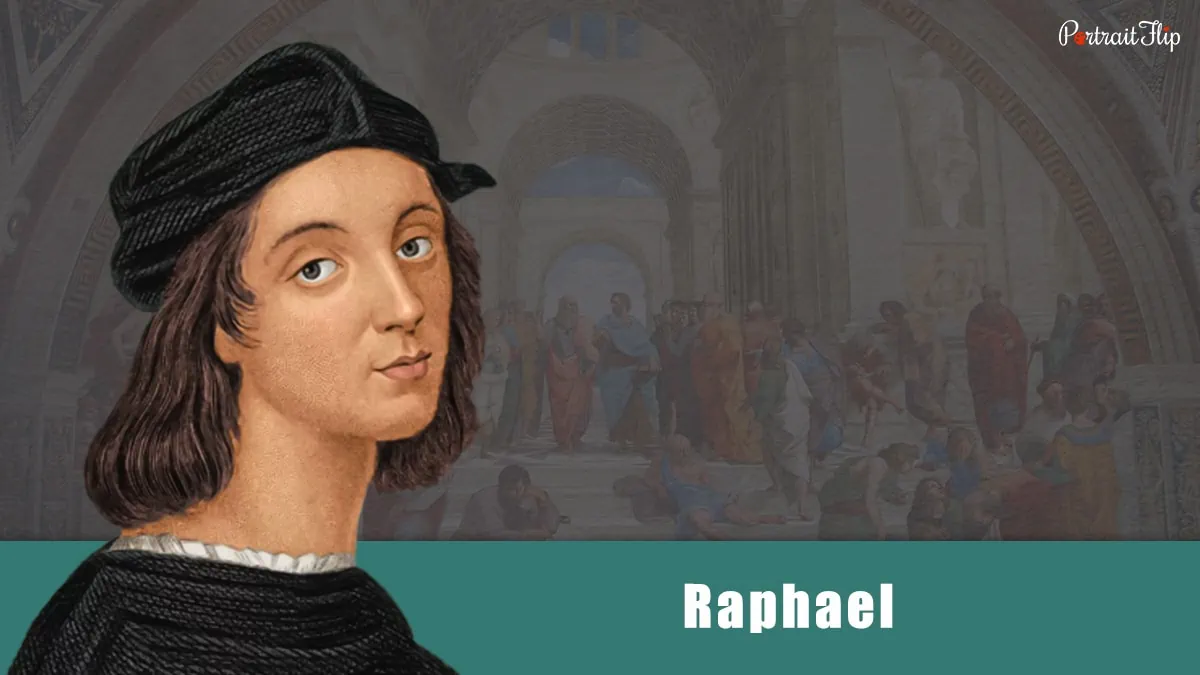
Raphael was one of the four most important Renaissance artists and was known for his legendary paintings like The School of Athens, Transfiguration, and The Sistine Madonna.
The renowned Renaissance painter lived a short life, but it was a fruitful one. Throughout his lifetime, he produced paintings in different categories and for different purposes.
At a very young age, he achieved a lot of things, as it was said that Raphael used to get commissions across Europe.
Raphael’s paintings were detailed and meticulously created, which made it to several famous exhibitions.
Raphael’s The Academy of Athens was the greatest painting ever made in the high Renaissance period.
Not only did he paint, he also sculpted and created frescoes.
The Renaissance painter even studied the principles of ancient art during his stay in Rome, where he learned how to create harmonic and natural scenes along with Michelangelo and Leonardo da Vinci.
Raphael was one of a few Renaissance artists who continued painting for years with his own style. His style had a great deal of interest in the classical antiquity of art named “neo-Platonic.”
Throughout his lifetime, the Renaissance artist worked with many prominent artists who brought the best out of him.
However, Raphael would consider his father’s teachings the most important, as he was the first one who believed in Raphael at a very young age and piqued his interest in art.
Notable Work: The School of Athens, Transfiguration, and The Sistine Madonna
(Also Read: 10 Controversial Artworks That Created A Storm of Theories Around Them)
10. Titian
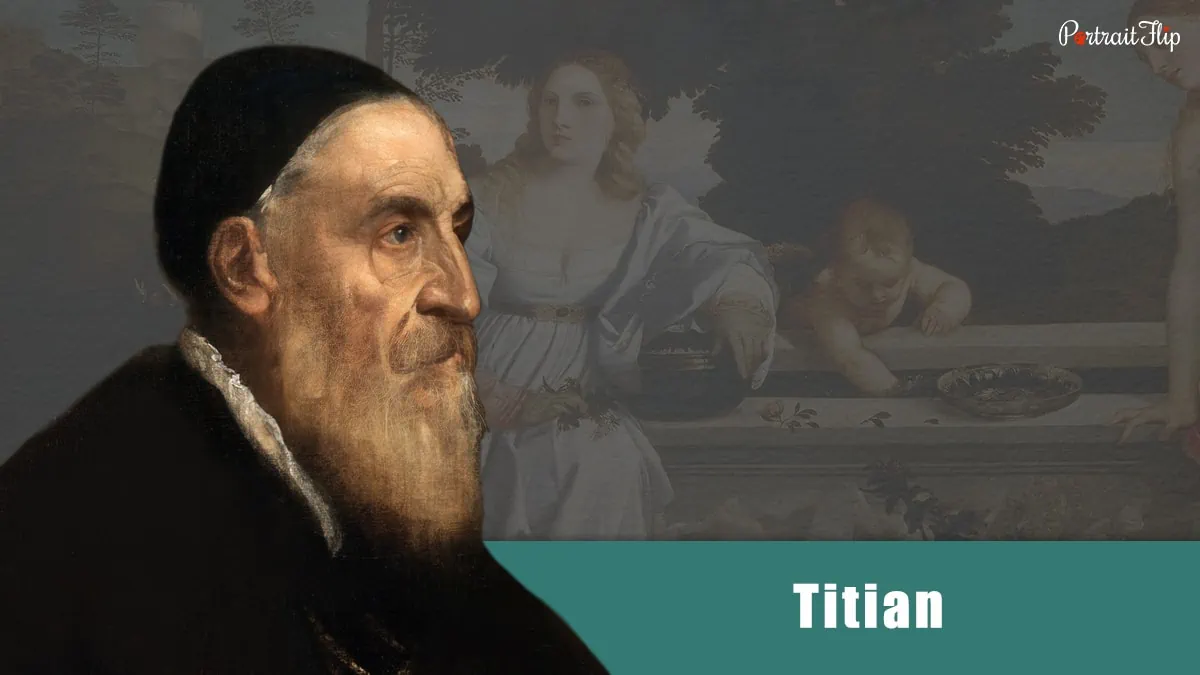
The Renaissance’s most famous painter, Titian, created different categories of art, from landscapes to biblical art.
The Renaissance’s most famous painting belongs to Titian, as he’s known for his dramatic yet lifelike style.
From the very start of his painting career, he received love and recognition. He was one of a few Renaissance painters whose works were commissioned by royal and elite people in Europe.
The versatile Renaissance painter, Titian, was particularly admired for his skills in mixing colors and using brushstrokes.
Titian imbibed from different painters with whom he used to collaborate and work as an apprentice. As a result, he produced works that included the Fresco of Hercules, the Gypsy Madonna, and the Visitation of Mary and Elizabeth, which were well-received by audiences.
The Renaissance painter’s tutors include Gentile and Giovanni Bellini, who were the leading painters from Italy, and who transformed his style and made him more mature when it comes to art.
The learning and dedication of time and effort into art made him one of the desirable artists in his 20s, which resulted in him being the most important figures of the 16th Century Venetian School.
Notable Work: Venus of Urbino and The Rape of Europa
(Suggestion: 11 Famous Cubist Paintings That Show Transition In The Movement)
11. Tintoretto
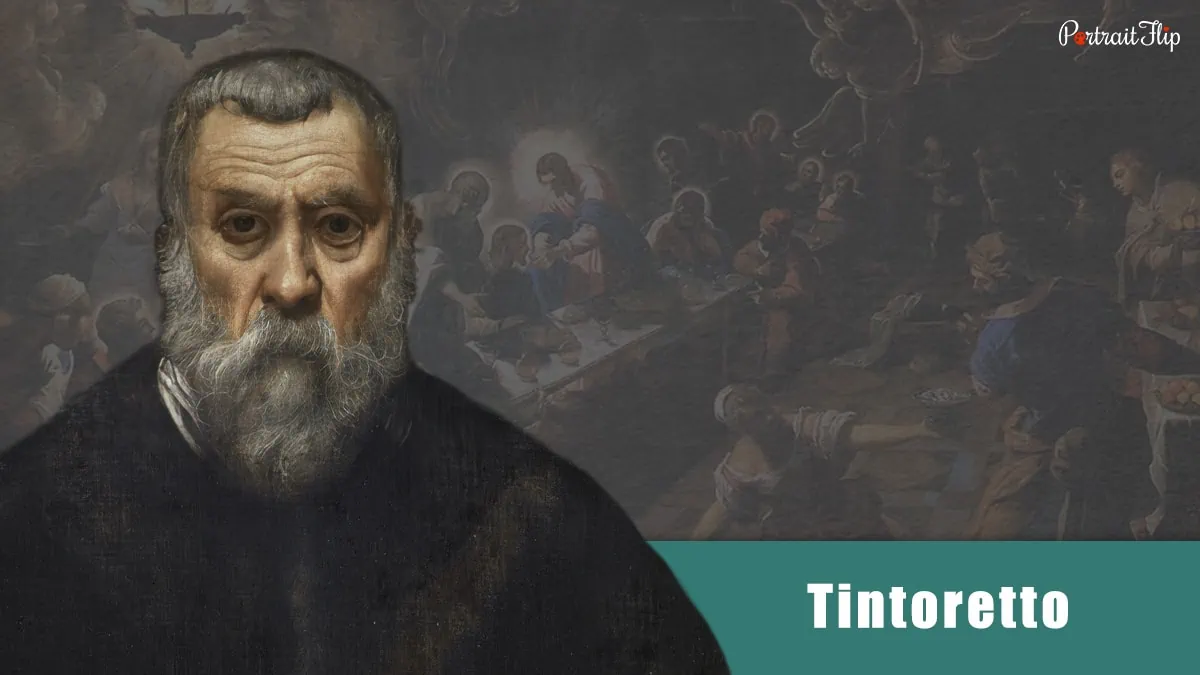
Jacopo Tintoretto, an Italian Renaissance painter, was known for his bold brush strokes and mannerist style of work.
Speaking of the Renaissance painter’s background and training, there’s no concrete information about his family or past professional background.
It’s believed that Tintoretto was trained in Italy and worked as an apprentice in the workshop of the other renowned Renaissance artist, Titian.
However, this apprenticeship didn’t last long, as the veteran Renaissance artist kicked him out of the workshop after a few weeks.
The reason was indifference in their personalities, which resulted in Tintoretto focusing on self learning.
As time went on, he developed his skills by continuing to produce paintings on furniture.
In Italy, when the Renaissance was at its peak, the most famous Renaissance art was the decoration of an ornate chest with paintings, Tintoretto stuck with his distinctive art style.
However, the style of the Renaissance artist was uncommon and more focused on a traditional approach. Which is why he had to face criticism and disapproval from various art communities.
The good part of his painting was the theme—majesty and drama—which made the Italian Renaissance artist’s paintings world class art.
During his endeavors in the Renaissance, Tintoretto was influenced by one of the most famous Italian Renaissance artists, Michelangelo.
Michelangelo’s late 1540s works, Dusk and Dawn, were the study material for Tintoretto. In fact, Tintoretto’s portrayal of muscular figures in Renaissance paintings in a complex manner is reminiscent of the Renaissance master’s painting, Michelangelo.
Notable Work: the Last Supper of San Giorgio Maggiore and The Origin of the Milky Way
Also Read: 13 Famous Japanese Artists
12. Donatello
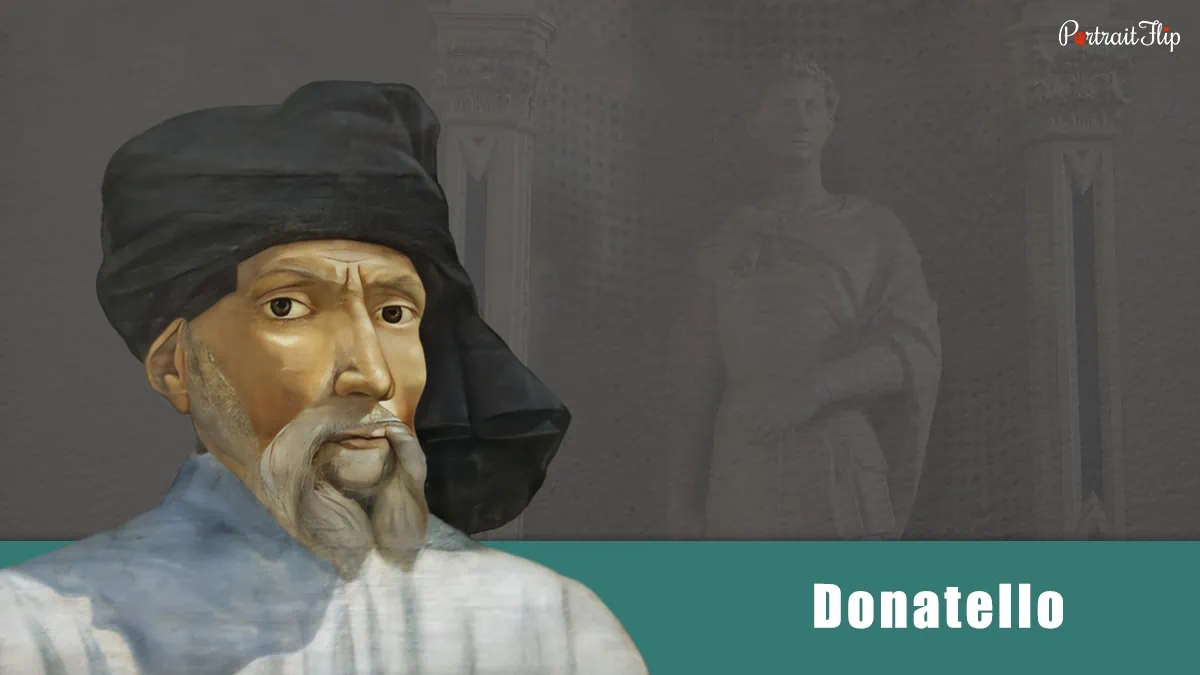
The famous Renaissance figure Donatello was known for his powerful expressivity in art.
He was the greatest sculptor from the Renaissance period who moved sculpting from Gothic to Greek and Roman styles.
Donatello was born and died in the same city, Florence, where the Renaissance was born.
The Renaissance artist Donatello studied classical sculpture in his teenage years and also learned how to incorporate creative techniques into his art.
His creative work would inspire a myriad of craftsmen. Donatello later upgraded his skills when he moved to Italy, where he’d seize every opportunity that would teach him the ancient art and literature of the world.
As an avid traveler, he’d visit new people and keep helping aspiring artists carve a niche.
Donatello produced some well-received Renaissance masterpieces, but his sculpture “the Bronze David” made a profound impact on hundreds of aspiring artists.
Highly influenced by classical principles, Renaissance art was the first nude statue made since antiquity, which revived antiquity in Europe.
As a talented sculptor, he was even regarded as the “father of the Renaissance.”
However, he faced heat because of his portrayal of queer people in his art, which was taboo and controversial then.
Because of this, he was sacked from various projects and had to experience hardship and uncertainty.
As time went on, people from the Renaissance began appreciating Donatello’s art, which became the buzz of the era in no time.
Notable Work: The Feast of Herod and Saint Mark
(Also Read: 15 Johannes Vermeer’s Paintings)
The Bottom Line
The Renaissance movement witnessed truckloads of artists who tried their best to spread deeper messages through art.
Out of them, these 12 played a significant role in following the core objective of Renaissance art, which is the revival of ancient ideas from Greece and Rome.
Through Renaissance art, any aspiring artist could portray their experiences onto canvas and display the beauty and mystery of the world.
These most famous Renaissance people were solely responsible for the development of the art movement, and their works left a massive impact on European cities like Florence, Rome, and Venice.
Today, you’ll find these Renaissance artists’ works in different parts of Europe, mostly owned by renowned art galleries and museums.
Each of the Renaissance paintings conveys insightful and intense meaning, which can also be a part of your home decor.
We mean you can have its replica ordered for yourself.
Unarguable, it’s a no-brainer way to show the world how big of a painting lover you are.
Here’s all you need to know:
Hello Art Lovers,
Thank you so much for reading this blog about Renaissance artists all the way to the end.
We’ve put out the necessary and relevant information to this blog. I hope you liked it. You can also check my article on Harlem Renaissance where we talked about the life of African-Americans in the early 20th Century.
If you would like to add some facts, be sure to use the comment section down below!
Also, subscribe to our YouTube channel and follow us on Instagram, where we post cool content daily!
Check out our blog page if you are interested in consuming some more interesting art content.
Frequently Asked Questions
Leonardo da Vinci is unarguably the most celebrated and famous painter of all time and was often regarded as the “Renaissance Man”.
The Mona Lisa painting, The Last Supper, The Birth of Venus, and The Sistine Chapel Ceiling were the famous works of Renaissance art.
Michelangelo was one of the few artists in the world and the world’s first Renaissance painter whose biography was made during his lifetime.
Caravaggio began his career by producing still life paintings before shifting to Renaissance art.
Peter Bruegel The Elder was the pioneer of genre painting and the most famous Northern Renaissance artist.
The most celebrated Renaissance artist from Italy was Sandro Botticelli who was the creator of the Birth of Venus and Primavera.
The objective of the Renaissance artists was to revive ancient Greek and Roman cultural ideas and set high standards in art for the next generation of painters.




